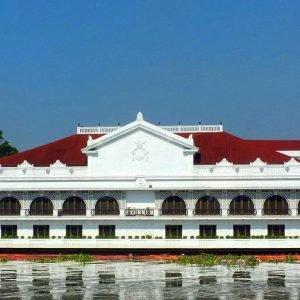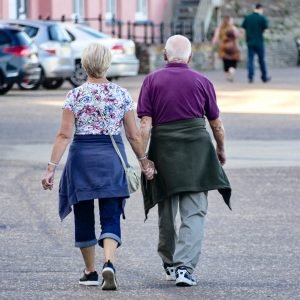
Introduction
The concept of Blue Zones, regions of the world where people experience significantly longer and healthier lives, has gained considerable attention in recent years. These areas are characterized by high concentrations of centenarians and are often linked to specific lifestyle choices, social structures, and environmental conditions. In stark contrast, Black Zones are defined as areas where health outcomes are poor due to various detrimental factors. This article aims to delve into the intricacies of Blue Zones globally and in the Philippines, identify Black Zones within the country, and provide comprehensive policy recommendations to promote the principles of Blue Zones. Additionally, it will address the environmental health factors that contribute to aging trends and public health challenges.
Understanding Blue Zones
Definition and Characteristics
Blue Zones are regions identified by researcher Dan Buettner, where people enjoy significantly longer life spans. Buettner’s studies revealed that these areas share several common characteristics that contribute to the longevity and well-being of their inhabitants. In these regions, diets are predominantly plant-based, emphasizing vegetables, fruits, legumes, and whole grains. Regular, moderate physical activity is seamlessly integrated into daily life, with many residents engaging in activities such as walking, gardening, and cycling. Strong social networks play a vital role, fostering close-knit communities that provide emotional support and connection. Moreover, a strong sense of purpose and community involvement contributes to the mental well-being of individuals in these regions. Finally, practices that promote relaxation and stress management, such as meditation and spending time in nature, are common among Blue Zone populations.
Global Blue Zones
Buettner identified five original Blue Zones: Okinawa in Japan, Sardinia in Italy, the Nicoya Peninsula in Costa Rica, Ikaria in Greece, and Loma Linda in California, USA. Each of these regions exhibits unique cultural practices and lifestyle choices that contribute to their residents’ longevity. For instance, Okinawa is renowned for its plant-based diet and a lifestyle that emphasizes family bonds and social engagement. Sardinia’s Mediterranean diet and cultural values that prioritize family and community connection play a crucial role in its residents’ long life spans. In the Nicoya Peninsula, a diet rich in fruits, combined with strong familial ties and an active lifestyle, contributes to the health of its inhabitants. Ikaria is notable for its high consumption of vegetables and legumes, as well as a focus on leisure and social interaction. Loma Linda stands out due to the health-conscious habits of its predominantly Seventh-day Adventist population, who adhere to strict dietary guidelines and emphasize physical activity.
Environmental Health in Blue Zones
Research indicates that environmental health is crucial for longevity in Blue Zones. Factors such as access to clean air and water, the availability of green spaces, and access to healthy food options significantly contribute to the well-being of these populations. For instance, studies have shown that communities with more green spaces experience lower stress levels and enhanced social cohesion. A review of data from the American Journal of Preventive Medicine found that residents in areas with abundant parks reported improved mental health and overall life satisfaction.
Black Zones: Definition and Characteristics
Understanding Black Zones
In stark contrast to Blue Zones, Black Zones are areas where health outcomes are suboptimal, characterized by high rates of disease, environmental degradation, and limited access to health services. Several factors contribute to the emergence of Black Zones, including environmental pollution, poor diet and lifestyle choices, socioeconomic disparities, and urban overcrowding. Areas heavily affected by industrial pollution, inadequate waste disposal, and a lack of clean water often find themselves classified as Black Zones. The health outcomes in these regions tend to be poorer, with higher incidences of chronic diseases and lower life expectancy.
Identifying Black Zones in the Philippines
In the Philippines, several regions can be classified as Black Zones due to environmental degradation and public health challenges. Metro Manila, for instance, faces severe air pollution due to traffic congestion and industrial activities. The World Health Organization reported that in 2021, Metro Manila had an average PM2.5 level of 37.5 µg/m³, significantly above the recommended level of 10 µg/m³. This pollution contributes to a range of health issues, including respiratory diseases and cardiovascular problems.
Similarly, the Cavite and Laguna areas, which have experienced rapid industrial growth, suffer from environmental pollution that affects air and water quality. For example, the Philippines Environmental Management Bureau reported that industrial discharges into water bodies have led to significant ecological damage and health risks for local communities. In the Davao Region, rapid urbanization and inadequate waste management have resulted in pollution and public health challenges, including outbreaks of dengue fever linked to poor environmental conditions.
Aging Trends and Environmental Problems
Human Aging Trends
Globally, populations are aging due to advances in healthcare, nutrition, and living standards. According to the United Nations, the number of individuals aged 60 and over is projected to reach 2.1 billion by 2050. In the Philippines, the proportion of elderly individuals is increasing, with the Philippine Statistics Authority estimating that by 2040, around 12 million Filipinos will be aged 60 and above. This demographic shift presents challenges, particularly in regions facing environmental degradation, which can exacerbate health issues among older adults.
Environmental Problems Impacting Aging
Environmental problems such as air pollution, climate change, and water scarcity disproportionately affect older adults. Chronic conditions like respiratory diseases, heart diseases, and cognitive decline are exacerbated by poor environmental quality. For instance, a study published in the Journal of Aging and Health found a direct correlation between air quality and cognitive decline among elderly populations. In the Philippines, the prevalence of chronic obstructive pulmonary disease (COPD) is alarmingly high, with the Department of Health reporting that it is one of the leading causes of morbidity and mortality among older adults.
Policy and Program Recommendations for Promoting Blue Zones in the Philippines
To transition towards promoting Blue Zones in the Philippines, comprehensive policies and programs must be developed that focus on enhancing environmental health, fostering community engagement, and addressing socio-economic disparities.
Enhancing urban planning and green spaces is crucial for creating healthier environments. Developing a national urban planning policy that prioritizes green spaces, parks, and community gardens can significantly impact community well-being. Engaging local communities in planning and maintaining these green spaces fosters ownership and social cohesion, leading to healthier lifestyles.
Promoting healthy diets is another essential aspect of transitioning towards Blue Zones. Implementing nationwide campaigns to educate citizens about the benefits of plant-based diets and healthy eating is vital. Supporting local farmers by providing subsidies or incentives for organic farming and establishing farmers’ markets can help increase access to fresh, nutritious food.
Improving air and water quality is paramount. Strengthening regulations on industrial emissions and waste disposal can lead to significant improvements in air and water quality, benefitting public health. Additionally, establishing a robust system for monitoring environmental health indicators and their impact on community well-being can provide valuable insights for policymakers.
Access to healthcare is another critical area that requires attention. Expanding access to affordable healthcare services, especially in underserved communities, can help address health disparities. Implementing preventive health programs that focus on lifestyle-related diseases, promoting regular check-ups and screenings, can further improve health outcomes.
Fostering social connections and community engagement is vital for enhancing the overall quality of life. Creating community centers that provide social programs, recreational activities, and workshops can encourage social interaction. Establishing volunteer programs that promote community involvement can also foster a sense of belonging and support.
Addressing socio-economic disparities is essential for promoting health equity. Implementing targeted economic development initiatives in Black Zones can create jobs and improve living standards. Enhancing access to quality education, particularly for marginalized communities, empowers individuals and promotes healthier lifestyles.
Finally, integrating environmental health into education is crucial for fostering awareness and responsibility from a young age. Developing curricula that include environmental health education can cultivate a sense of stewardship among students. Offering workshops for communities to learn about sustainable practices and their health benefits can also promote engagement.
Conclusion
The exploration of Blue and Black Zones reveals critical insights into the relationship between environmental health, lifestyle choices, and human aging. By adopting comprehensive policies that promote the principles of Blue Zones, the Philippines can foster healthier communities, mitigate the impact of environmental problems, and enhance the quality of life for its citizens.
As the world continues to grapple with the challenges posed by aging populations and environmental degradation, prioritizing health and sustainability in community planning will be essential. Through collaborative efforts and a commitment to improving public health, the Philippines can cultivate environments that promote longevity, well-being, and resilience for generations to come.
References
- Buettner, D. (2012). The Blue Zones: 9 Lessons for Living Longer from the People Who’ve Lived the Longest. National Geographic.
- World Health Organization. (2021). Air Quality and Health. Retrieved from WHO website.
- Philippine Statistics Authority. (2020). Population Projections for the Philippines. Retrieved from PSA website.
- Department of Health (Philippines). (2020). Annual Report on Disease Control.
- American Journal of Preventive Medicine. (2020). “Green Space, Urbanity, and Health: A Systematic Review.”
- Journal of Aging and Health. (2019). “Air Pollution and Cognitive Decline Among Older Adults: A Review.”






